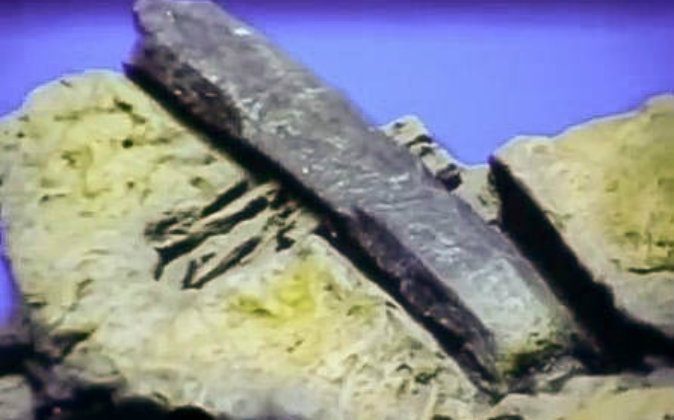
A hammer was found in London, Texas, in 1934 encased in stone that had formed around it. The rock surrounding the hammer is said to be more than 100 million years old, suggesting the hammer was made well before humans who could have made such an object are thought to have existed.
Much mystery surrounds the so-called "London Hammer." Many have contested claims that the hammer is so old.
Carl Baugh, who is in possession of the artifact, announced that it was tested by Battelle Laboratory in Columbus, Ohio, a lab that has tested moon rocks for NASA. According to Baugh, the tests found the hammer to have unusual metallurgy—96.6 percent iron, 2.6 percent chlorine, 0.74 percent sulfur, and no carbon.
Carbon is usually what strengthens brittle iron, so it is strange that carbon is absent. Chlorine is not usually found in iron. The iron shows a high degree of craftsmanship without bubbles in the metal. Furthermore, it is said to be coated in an iron oxide that would not readily form under natural conditions and which prevents rust.
Glen J. Kuban, a vocal skeptic of Baugh's hammer claims, wrote in a 1997 paper titled "The London Hammer: An Alleged Out-of-Place Artifact," that the tests were conducted privately rather than at Battelle Laboratory. He cites a 1985 issue of the magazine Creation Ex Nihilo. Epoch Times contacted Battelle Laboratory to verify. A spokeswoman said she had not heard of the hammer in her 15 years at the lab, but she would check into it.
Kuban said the stone may contain materials that are more than 100 million years old, but that doesn't mean the rock formed around the hammer so long ago. Some limestone has formed around artifacts known to be from the 20th century, so concretions can form fairly quickly around objects. Concretions are masses of hardened mineral matter.
Baugh's website says, however, that the fossils in the stone surrounding the hammer "retain fine detail, indicating that they were not reworked, but [are] part of the original formation." This would suggest the fossils and the hammer are from the same time period, that the fossils did not just get mixed up in materials that formed rock around the hammer at a later date.
"Even if Baugh's statements were true about the fossils retaining fine detail, it would not at all preclude the nodule being a relatively recent concretion, since the [reworking] ... would not require any significant amount of abrasion or transport," wrote Kuban in an email. Kuban also questioned Baugh's claims, since they had not been published in a peer-reviewed journal or other authoritative literature.
Carbon dating performed in the late 1990s "showed inconclusive dates ranging from the present to 700 years ago," Baugh supporter David Lines reported at the time. According to Kuban, Lines said the test had been contaminated by more recent organic substances. Such contamination is one of the reasons Baugh is said to have delayed having the artifact carbon dated (skeptics say he delayed because he feared being proven wrong). Dating is often called into question on both sides—by skeptics and proponents—for various reasons when it comes to ooparts.
The object was found by a hiker, and it seems it was not found embedded in the original layer of rock, which would have made a stronger case for an ancient origin. It was a chunk of rock found resting on a ledge, perhaps having tumbled there from within a larger formation.
As evidence of the hammer's age, Baugh said part of the wooden handle had turned to coal. The photos of the hammer show a black part of the hammer that looks like it could be coal.
The debate surrounding the hammer's origin has become bound up with the creationism versus evolutionism debate. Baugh is a creationist. Kuban is a creationist-turned-skeptic (or a much more moderate creationist). Creationist take various stances on this artifact, and many evolutionists dismiss it as a creationist hoax. Kuban wrote in an email that "not a single major creationist group has endorsed or his claims about the hammer."
The object remains a fascinating one apart from its role in this controversy.
This is one of many objects said to be out of place in time. Epoch Times continues to explore more such findings.
Article updated April 22: Epoch Times added quotes from an email correspondence with Glen Kuban and clarified some information about concretion formation.
About: Tara MacIsaac is an Environment reporter. She especially focuses on energy, water, and deforestation issues. Before joining Epoch Times in 2010, she worked as a treeplanter in northern Canada and traveled to spend months in some of the world's most beautiful nature reserves.



Comment: There certainly are many strange artifacts that seem to be laying about either upon our Terra soils, within soils, rock or underwater. In this case, without a good chain of custody of the evidence (100 million years seems a leap), it is difficult to say. However there are many stories from people like Michal Cremo that describe unusual Ooparts.
See also: